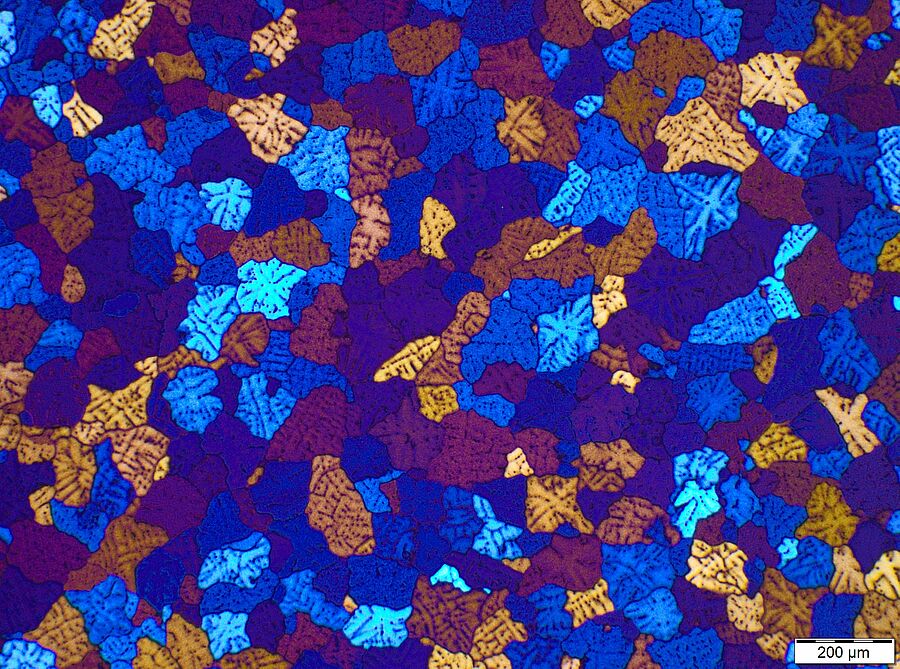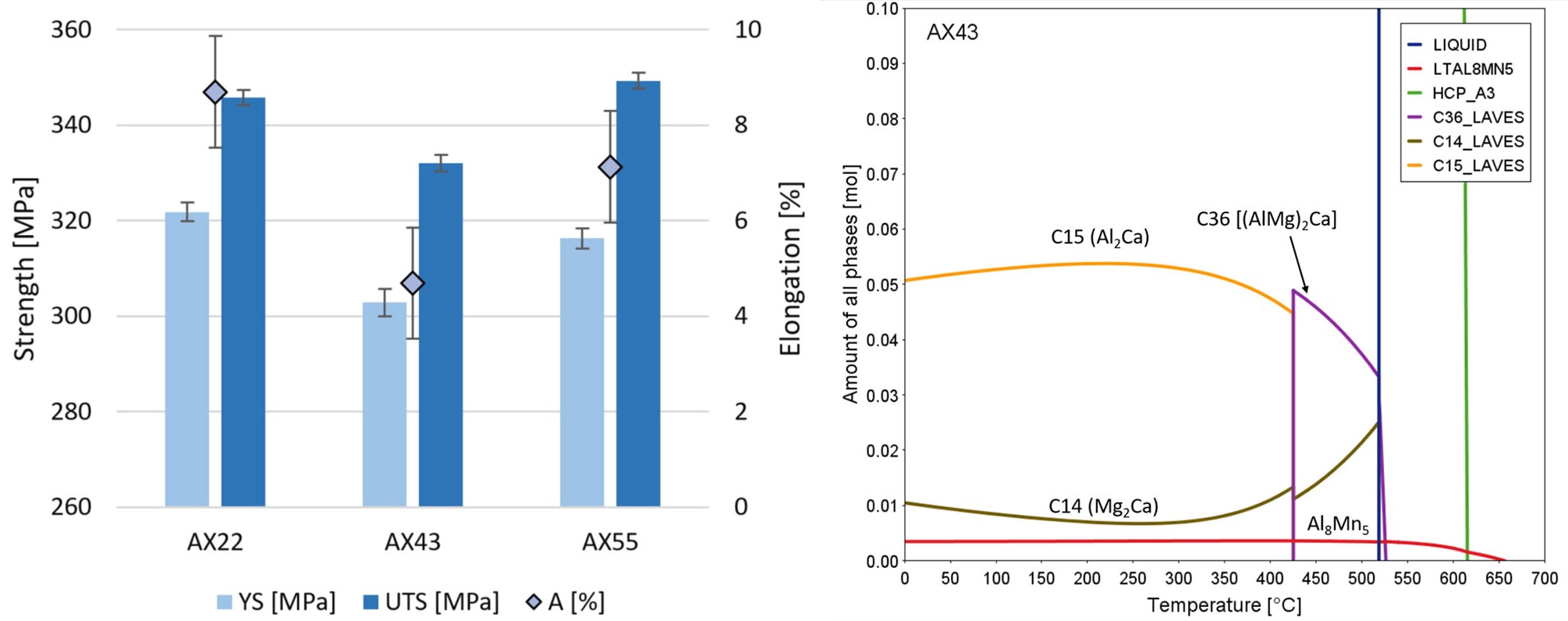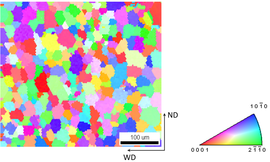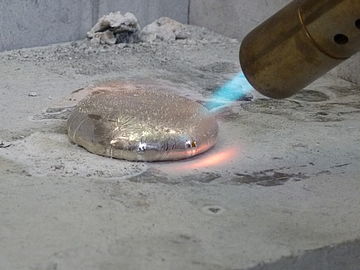Fire resistant magnesium alloys
Until now, magnesium was not suitable or permitted for many applications because it tends to oxidize and is therefore highly flammable. The team at the LKR is working on several research projects to further develop alloys with particularly high oxidation resistance. The main aim is to find a general approach to a solution that will allow all alloys to be improved by specific "modification" of their chemical composition.
Thus, alternatives to the classic casting alloys AZ91 and AM60 have already been presented, which are particularly flame-resistant and meet the current aviation regulations regarding fire resistance. The advantages are in particular:
- improved fire resistance combined with good mechanical properties
- Certification: passed fire test according to FAA
- significantly more cost-effective than alloys with comparable fire resistance, e.g. WE43
- reliable processing (die casting, thixomolding)
The team at the LKR is currently researching fire-resistant alloys for a wide range of processes - from casting processes such as die casting and thixomolding to forming processes such as extrusion and forging and new types of processes such as wire arc additive manufacturing.
Fire resistant magnesium alloys for forming processes
For forming processes, the focus is mainly on Mg-Al-Ca alloys with a Ca/Al ratio of approx. 1 (in weight %). Calcium not only weakens the otherwise very strong Mg texture, it also supports the formation of additional, protective oxide layers on the material.
Due to intermetallic phases which form at the basal planes of the Mg lattice structure, these materials have high strength, while good formability is achieved by activating additional sliding planes at forming temperature.
Left: Results of the tensile tests of the alloys AX22, AX43 and AX55 in extruded condition; Right: thermodynamic calculation of the expected phases of alloy AX43 in the equilibrium state.
Fire resistant magnesium alloys for additive manufacturing
In addition to the classical primary and forming processes, processes of additive manufacturing are becoming increasingly important in research and industry. In addition to new challenges, this type of production also offers many opportunities. For example, complex components with enormous weight-saving potential can be created, especially when using magnesium. The advantage of the process is the high local cooling rate, which on the one hand leads to fine grain and on the other hand to very good phase incorporation.
In order to exploit the full potential, however, materials which have been specifically adapted to the requirements of these processes are necessary. Magnesium alloys, which were created explicitly for additive manufacturing, do not exist so far.
This is precisely the area in which the LKR team is currently conducting research. A new type of material system has already been presented that surpasses known materials in terms of processability and strength. The alloy AEX11, for example, can be processed just as easily as commercial AZ61 welding filler material, but has 15 % higher tensile strength with the same ductility. This is achieved among other things by a high degree of solid solution strengthening and additional hardening precipitation phases.







![[Translate to English:] LKR Standort](/fileadmin/_processed_/2/8/csm_AIT_LKR_Standort_4fe61c1df0.jpg)